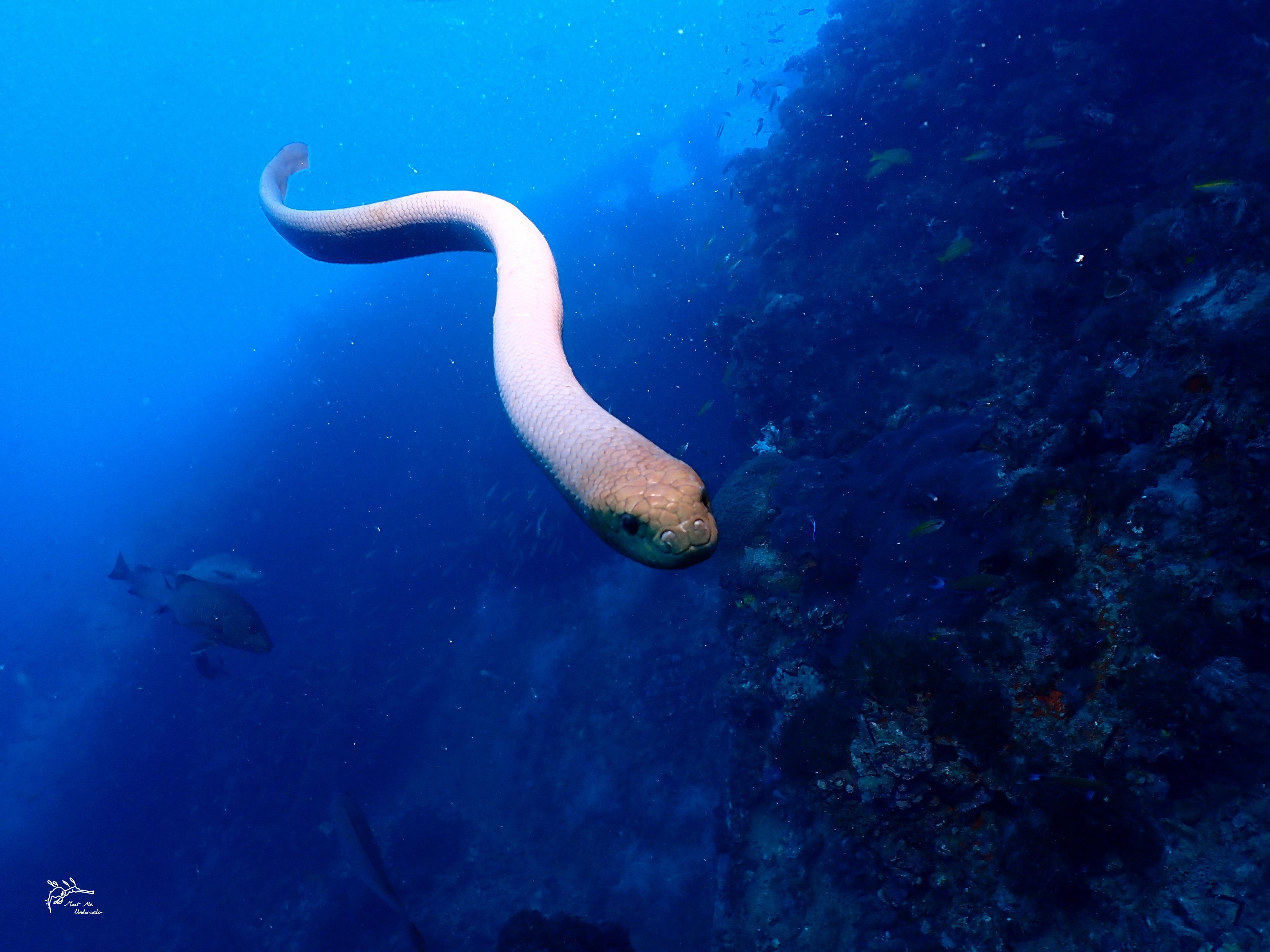News release
From:
Beware when sea snakes swipe right
Attacks by venomous Olive sea snakes on scuba divers may be misdirected courtship behaviours, according to a study by published in Scientific Reports.
Scuba divers frequently report unprovoked attacks by sea snakes, which can involve chasing and biting. The reasons for these attacks have been unclear, but the new research suggests the sea snakes may be mistaking divers for potential mates.
Professor Rick Shine from Macquarie University’s Department of Biological Sciences and colleagues analysed data collected between 1994 and 1995 describing Olive sea snake behavior during encounters with one of the authors, Tim Lynch, when he was a diver in the Great Barrier Reef, Australia.
The researchers found that sea snakes approached the diver during 74 out of 158 encounters and that this occurred more frequently during mating season – between May and August. Males were more likely than females to approach the diver, especially during mating season, and to flick their tongues near the diver’s body. 13 encounters involved sea snakes rapidly charging at the diver.
The authors observed that all charges occurred during mating season and that those involving males occurred immediately after an unsuccessful chase of a female, or an interaction with a male rival. Three males were also observed coiling around the diver’s fin, a behavior usually observed during courtship. Charges by females occurred after they were chased by males or lost sight of, and then re-approached, the diver.
Previous research has suggested that sea snakes find it difficult to identify shapes in water. The authors suggest that sea snake attacks may be caused by male sea snakes mistaking a diver for a rival snake or potential mate and female sea snakes perceiving a diver as a potential hiding place. By staying still and allowing a sea snake to investigate them with its tongue, a diver is unlikely to escalate the encounter and be bitten, according to the authors.
“The ocean is a dangerous place for human beings – if anything goes wrong, things can end badly. And seeing a giant sea snake hurtling towards you certainly qualifies as “something going wrong”,” says Professor Shine.
“Hopefully, understanding why that snake is heading towards you – that he has mistaken you for a female of his own species – can calm your nerves and lead to a better outcome all around.”



 Australia; NSW; QLD; TAS
Australia; NSW; QLD; TAS



